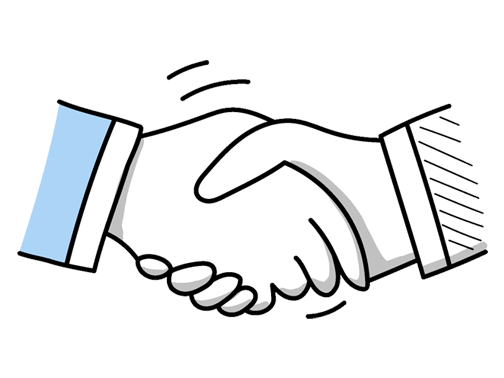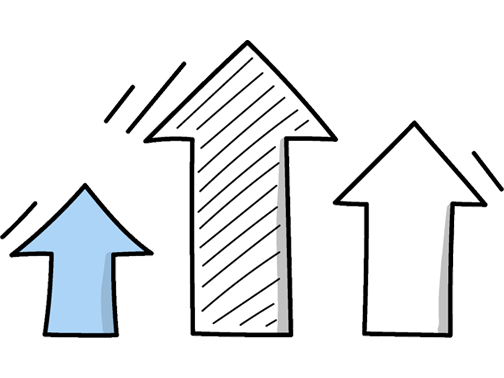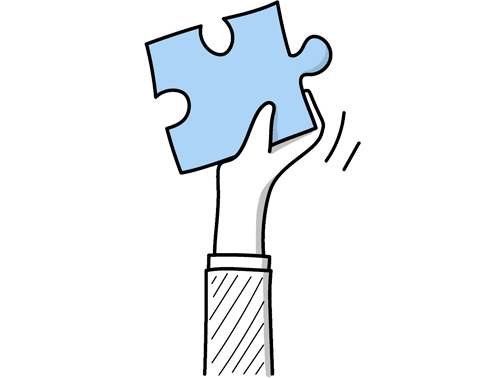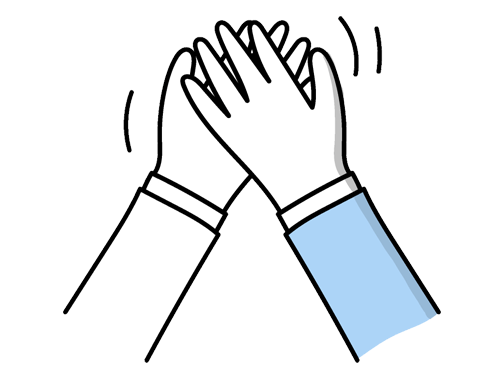Manufacturing Engineer Interview Questions (2025 Guide)
Find out common Manufacturing Engineer questions, how to answer, and tips for your next job interview
Practice Interviews Online - Identify your strengths and weakness in a realistic Manufacturing Engineer mock interview, under 10 minutes
Practice Now »Manufacturing Engineer Interview Questions
Interviewers want to see that you can communicate clearly and work well with others to achieve project goals efficiently. You should say that you keep the team updated regularly, organize meetings to coordinate tasks, and stay open to feedback to adjust plans as needed.
Example: I make it a priority to keep everyone informed and involved by sharing updates clearly and checking in regularly. When coordinating tasks, I focus on understanding each person’s strengths to balance the workload smoothly. I also stay open to feedback and different ideas, which often leads to better solutions. For example, on a recent project, this approach helped us spot a design issue early and avoid costly delays.
What they want to know is how you systematically identify and resolve problems to minimize downtime and ensure safety. You should explain that you first gather data, analyze symptoms, and then test potential causes step-by-step until the failure is fixed.
Example: When equipment fails, I start by gathering all relevant information to understand the issue fully. I then systematically check the most common causes, using data and experience to narrow down the problem. For example, once I traced a conveyor halt to a sensor fault by reviewing error logs and running tests. Clear communication with the team is key throughout, ensuring everyone stays informed and solutions are implemented efficiently.
This question helps interviewers assess how you lead and maintain a productive team environment. You should explain that you communicate regularly to understand and address concerns, provide positive feedback to motivate, and delegate tasks based on strengths to foster collaboration and ownership.
Example: I focus on open dialogue to really listen to what each team member needs, which helps build trust and address any issues early on. I make it a point to celebrate both individual efforts and team wins, which keeps morale high. Creating a supportive atmosphere where everyone feels their ideas matter encourages collaboration and drives us all toward common goals—like when we recently improved a process together, boosting efficiency and team spirit.
What they want to know is how comfortable you are with CAD tools and how you apply those skills to real engineering challenges. You need to mention the specific software you’ve used, describe how you applied it to improve designs or solve problems, and show your ability to work with other teams using CAD models.
Example: I've worked extensively with SolidWorks and AutoCAD, using them to create detailed 3D models and technical drawings. In one project, I redesigned a faulty gearbox housing, which improved durability and reduced costs. I often collaborate with design and production teams, sharing CAD models to ensure everyone is aligned and any issues are caught early, streamlining the manufacturing process.
Hiring managers ask this question to gauge your understanding of safety standards and your ability to apply them in a real manufacturing setting. You need to show that you know key regulations like the Health and Safety at Work Act, explain how you conduct audits and risk assessments, and describe how you promote a culture where the team feels comfortable raising safety issues.
Example: In manufacturing, I stay up to date with regulations like COSHH and PUWER, ensuring all processes meet these standards. I regularly conduct risk assessments and engage the team through clear communication and training sessions. For example, introducing daily safety briefings helped identify hazards early, making safety a shared responsibility rather than just a rule. This approach not only keeps everyone safe but also promotes a positive working environment.
This interview question assesses your teamwork and cross-functional collaboration skills, which are crucial for a manufacturing engineer to ensure smooth processes and problem-solving. In your answer, clearly describe a specific example where you coordinated with other departments, highlighting your communication and cooperation to successfully achieve the shared objective.
Example: In my previous role, I collaborated closely with the quality and production teams to reduce a recurring defect. By sharing insights and adjusting workflows together, we identified the root cause and implemented process changes. This teamwork not only improved product quality but also streamlined production schedules, showing how cross-department cooperation drives meaningful results.
This question assesses your ability to maintain high standards and prevent defects in manufacturing. You should explain how you use tools like statistical process control to monitor quality, apply precise measurement and calibration techniques, and address issues by identifying root causes and implementing corrective actions.
Example: To maintain quality and precision, I rely on regular inspections and consistent use of calibrated tools to catch any variations early. When issues arise, I dive into the data to identify root causes and adjust processes accordingly. In a previous role, this approach reduced defects by 20%, ensuring products met both design specs and customer expectations without compromising efficiency.
Interviewers ask this question to see if you can systematically identify and address issues that slow down production. You need to explain how you analyze data to find the root cause, implement practical solutions to fix it, and monitor results to ensure continuous improvement.
Example: When I spot a slowdown in production, I start by digging into the process to find what’s really causing the hold-up. Once I understand the issue, I work on practical fixes, whether that’s adjusting workflows or updating equipment. After putting changes in place, I closely monitor the results to make sure things improve and tweak the approach if needed. For example, at my last role, this helped reduce downtime by 20%.
What they want to know is how you handle pressure and organize work to meet urgent goals. You need to explain how you planned the schedule, coordinated the team, and adapted to challenges to ensure the deadline was met.
Example: During a recent project, we faced a sudden deadline shift requiring faster output. I quickly reassessed the workflow, focusing on critical tasks and reassigning resources. I kept regular check-ins with the team to address any issues early and coordinated closely with suppliers to ensure timely material delivery. When unexpected machine downtime occurred, we adjusted schedules on the spot to maintain progress and still met the deadline without compromising quality.
This interview question aims to assess your adaptability and problem-solving skills when facing disruptions in manufacturing processes. You need to explain how you stay calm, quickly analyze the situation, and communicate effectively with your team to implement timely solutions.
Example: In my previous role, when unexpected changes arose, I stayed flexible and focused on clear communication with the team. For example, when a supplier delay threatened our timeline, I quickly reorganised tasks, prioritising critical processes to keep production moving. This approach helped us meet deadlines without compromising quality. Staying calm and adaptive in those moments has always been key to managing disruptions effectively.
What they want to understand is how well you grasp lean manufacturing principles and your ability to apply them practically to improve processes and team performance. You need to briefly explain key lean concepts like waste reduction and continuous improvement, then give a clear example of how you used these methods to enhance efficiency and collaboration in your past work.
Example: Lean manufacturing focuses on reducing waste and improving efficiency by streamlining processes and empowering teams. In my previous role, I introduced value stream mapping to identify bottlenecks, which helped us cut lead times by 20%. This not only boosted productivity but also encouraged better teamwork, as everyone contributed ideas to improve workflows. It’s rewarding to see how small changes can make a big difference in both output and morale.
Hiring managers ask this to see how you prioritize workplace safety and lead your team to prevent accidents. You need to say that you regularly monitor safety through audits, communicate clearly via training sessions, and proactively identify risks by conducting assessments before new projects.
Example: To keep the team safe, I make sure everyone knows the procedures clearly and checks are done regularly to stick to them. I encourage open communication, so any concerns are raised early. Training sessions help refresh everyone’s knowledge and introduce new safety measures. When I spot a potential hazard, I address it immediately, like when we identified a machine fault early and fixed it before it caused any issues.
Interviewers ask this to see if you can handle all phases of a project and ensure successful delivery. You need to explain how you plan, coordinate resources, solve problems, and track progress to complete projects efficiently.
Example: In my previous role, I led a project to optimize an assembly line, starting with data analysis, coordinating cross-functional teams, and overseeing implementation. Throughout, I maintained clear communication to adapt plans as needed, ensuring timely delivery and quality standards. Seeing the process improve efficiency by 15% was rewarding and reinforced the importance of balancing technical insight with collaboration from start to finish.
This question helps interviewers assess your problem-solving skills and technical expertise in real-world scenarios. Clearly explain the project context, the steps you took to identify and solve the issue, and the positive results and lessons learned from the experience.
Example: In a previous role, we faced frequent machine downtime affecting production targets. I collaborated with the maintenance team to identify root causes, implementing a data-driven maintenance schedule. This reduced unexpected breakdowns by 30%, improving overall efficiency. The experience reinforced the value of teamwork and proactive problem-solving in a fast-paced manufacturing environment.
What they want to understand is how you identify inefficiencies and apply practical solutions that save money. You need to clearly describe a specific improvement you made, quantify the cost savings, and explain your role in the process.
Example: In my previous role, I noticed that machine setup times were longer than necessary. By reorganising tools and standardising procedures, we cut setup time by 30%, which reduced downtime and saved significant labour costs. This small change improved overall efficiency and allowed the team to meet production targets more consistently without extra resources. It was rewarding to see how a simple adjustment made a real impact on both cost and workflow.
Questions like this assess your awareness of workplace safety and your proactive problem-solving skills. You need to explain a specific hazard you noticed, the steps you took to fix it, and the positive outcome that improved safety.
Example: In a previous role, I noticed a machine guard was frequently left open, which posed a risk to operators. I brought it to the team’s attention and worked with maintenance to install an interlock system that stopped the machine if the guard wasn’t secured. This not only improved safety but also raised awareness about following protocols consistently on the shop floor.
Interviewers ask this question to gauge your hands-on experience and understanding of key manufacturing methods, ensuring you can select and optimize processes effectively. In your answer, clearly describe specific processes you’ve worked with, explain why they were chosen for certain projects, and highlight any improvements or management roles you played.
Example: I’ve worked with CNC machining and injection moulding extensively, understanding how each suits different materials and production volumes. In my last role, I helped optimise CNC setups to reduce cycle times by 15%, balancing speed with precision. I’m also familiar with lean manufacturing principles, which helped streamline processes and minimise waste, ensuring consistent quality while improving throughput. It’s about knowing the right process for the product and continually refining it.
This interview question assesses your knowledge of safety protocols and your practical experience in maintaining a safe work environment. You need to explain the specific safety standards you followed, describe hazards you identified, and share how you used audit results to improve safety processes.
Example: In my previous role, I regularly carried out safety inspections to ensure compliance with UK regulations, spotting potential risks before they became issues. I documented findings clearly and worked closely with teams to enhance safety procedures. For example, after identifying uneven flooring in a production area, we updated maintenance schedules which significantly reduced trip hazards and improved overall workplace safety.
Employers ask this to gauge your familiarity with process improvement and quality control techniques that reduce defects and increase efficiency. You need to briefly explain your hands-on experience using Six Sigma tools and how you've applied them to drive measurable improvements.
Example: In my previous role, I applied Six Sigma principles to identify process inefficiencies and reduce waste. By using DMAIC, I led a project that improved production line consistency, cutting defects by 15%. This hands-on experience taught me how data-driven decisions can enhance quality and boost productivity, which I’m eager to bring into a manufacturing setting here.
This interview question assesses your commitment to maintaining a safe work environment by staying informed about evolving safety standards. You need to explain that you proactively research updates through industry resources and internal communications, then apply these changes practically in your daily engineering tasks to ensure compliance and safety.
Example: I make it a point to regularly check industry websites and government updates to stay informed on safety standards. Within the team, I share any important changes through meetings or internal emails to keep everyone aligned. When I’m working on process improvements or equipment, I make sure those updates are incorporated practically to maintain a safe environment for everyone on the floor.
This interview question assesses your ability to maintain strong vendor relationships and ensure supply chain reliability. You need to explain how you communicate regularly with suppliers, solve issues promptly, and use metrics like KPIs to monitor and improve their performance.
Example: In my previous role, I worked closely with suppliers to ensure timely delivery and quality standards. When issues arose, like delays or defects, I communicated openly to find practical solutions together. I regularly reviewed key metrics such as lead times and defect rates to track performance and support continuous improvement. Building strong, transparent relationships helped maintain smooth operations and foster trust on both sides.
Hiring managers ask this question to assess your teamwork skills, problem-solving ability, and impact on project success. You need to briefly describe your role, the challenges your team faced, how you contributed to overcoming them, and the positive results you helped achieve.
Example: In a recent project to improve production line efficiency, I led the redesign of a key assembly process. We faced tight deadlines and equipment limitations, but by collaborating closely and adjusting workflows, we reduced bottlenecks significantly. As a result, the team boosted output by 15% within three months, which helped meet increased demand without adding shifts. It was rewarding to see how practical changes and teamwork made a real impact.
Questions like this help the interviewer understand your hands-on experience and the range of products you’ve contributed to, showing your versatility and industry knowledge. You need to clearly describe the types of products you’ve worked on, highlighting any relevant technologies or manufacturing processes you used.
Example: In my previous roles, I’ve worked on a range of manufacturing projects, from automotive components like engine parts to consumer electronics housings. I’ve been involved in optimising production processes for both metal and plastic assemblies, ensuring quality and efficiency. For example, I helped streamline the assembly line for a local car manufacturer, which improved throughput without compromising standards. It’s been rewarding to contribute to products people rely on every day.
Hiring managers ask this to see if you can communicate well, resolve issues practically, and keep a positive team environment. In your answer, explain how you listen to everyone involved, share an example of finding a compromise, and describe how you maintain respect among team members afterward.
Example: In my experience, when conflicts arise, I focus on understanding each person’s perspective by having open, respectful conversations. I aim to identify the root cause and work collaboratively to find solutions that benefit the team and the project. Keeping communication clear and professional helps maintain trust. For example, once two colleagues disagreed on a process change—I facilitated a discussion where both shared their views, leading to a compromise everyone felt good about.
Hiring managers ask this question to see how you recognize and solve real production issues that impact efficiency. In your answer, clearly state the problem you found, the actions you took to fix it, and the positive results your solution produced.
Example: During a previous role, I noticed an unexpected rise in defects on our assembly line. I reviewed the workflow and pinpointed a misaligned sensor causing errors. Collaborating with the maintenance team, we recalibrated the equipment and updated the quality checks. This reduced defect rates by 20%, improving overall efficiency and product consistency. It was a clear reminder of how small adjustments can make a big difference.
Ace your next Manufacturing Engineer interview with even more questions and answers
Common Interview Questions To Expect
The interviewer is looking for a brief overview of your background, experience, skills, and accomplishments relevant to the manufacturing engineering field. Be concise and highlight key points.
Example: Sure! I have a degree in Mechanical Engineering and have been working in the manufacturing industry for the past 5 years. I have experience in process improvement, quality control, and project management. I am passionate about finding innovative solutions to improve efficiency and productivity in manufacturing processes.
The interviewer is looking for a candidate who has done their research on the company, understands its products/services, values, and culture. Answers should demonstrate knowledge and interest in the company.
Example: I know that your company is a leading manufacturer in the UK, specializing in producing high-quality products for various industries. I also understand that your company values innovation, sustainability, and customer satisfaction. I am excited about the opportunity to contribute my skills and experience to a company with such a strong reputation in the manufacturing industry.
The interviewer is looking for honesty, professionalism, and a valid reason for leaving the previous job. Possible answers could include seeking career growth, better work-life balance, or a new challenge.
Example: I left my last job because I was looking for new opportunities to grow in my career as a Manufacturing Engineer. I felt like I had reached a plateau in my previous role and wanted to challenge myself with new projects and responsibilities. I am excited about the potential for growth and development in this new position.
The interviewer is looking for examples of how you have successfully collaborated with others, communicated effectively, and contributed to team goals. Be prepared to discuss specific projects and outcomes.
Example: Sure! In my previous role as a Manufacturing Engineer, I worked closely with cross-functional teams to improve production processes and reduce downtime. I effectively communicated with team members to troubleshoot issues and implement solutions that resulted in increased efficiency and cost savings. Overall, my experience working in a team has taught me the importance of collaboration and teamwork in achieving common goals.
The interviewer is looking for insight into your personal drive and passion for the role. You can answer by discussing your career goals, passion for problem-solving, or desire to make a positive impact in your field.
Example: What motivates me is my passion for problem-solving and making a positive impact in the manufacturing industry. I am driven by the challenge of finding innovative solutions to complex problems and constantly improving processes. My ultimate goal is to contribute to the success and growth of the company through my work as a Manufacturing Engineer.
Company Research Tips
The company's official website is a goldmine of information. Look for details about the company's history, mission, vision, and values. Pay special attention to the 'About Us', 'Our Team', and 'News' or 'Blog' sections. These can provide insights into the company culture, recent achievements, and future plans. For a Manufacturing Engineer role, also look for information about their manufacturing processes, technologies used, and any recent innovations.
Tip: Don't just skim through the website. Take notes and think about how you can align your skills and experiences with the company's needs and values.
LinkedIn can provide valuable insights about the company and its employees. Look at the company's LinkedIn page for updates and news. Check out the profiles of current and former employees, especially those in the manufacturing department. This can give you an idea of the skills and experiences the company values. You can also find information about the company's culture and work environment from employee posts and comments.
Tip: Use LinkedIn's 'Alumni' tool to find people who have worked at the company and are from your university. They might be willing to share their experiences and give you some insider tips.
Look for recent news articles, industry reports, and market analyses related to the company and the manufacturing industry. This can give you an understanding of the company's position in the market, its competitors, and the challenges and opportunities it might be facing. For a Manufacturing Engineer role, also look for information about recent technological advancements and trends in the manufacturing industry.
Tip: Use reliable sources for your research. Websites like BBC News, The Guardian, and industry-specific publications can provide accurate and up-to-date information.
Glassdoor provides reviews from current and former employees, which can give you insights into the company's culture, work environment, and management style. You can also find information about the interview process, including specific questions that have been asked in the past. For a Manufacturing Engineer role, look for reviews from people in similar roles to get a better idea of what the job might involve.
Tip: Take the reviews with a grain of salt. People are more likely to leave reviews when they have had a negative experience, so the reviews might not be fully representative of the company.
What to wear to an Manufacturing Engineer interview
- Dark-colored business suit
- White or light-colored dress shirt
- Conservative tie
- Polished dress shoes
- Minimal jewelry
- Neat, professional hairstyle
- Clean, trimmed fingernails
- Light use of perfume or cologne
- No visible tattoos or piercings
- Carry a briefcase or portfolio





